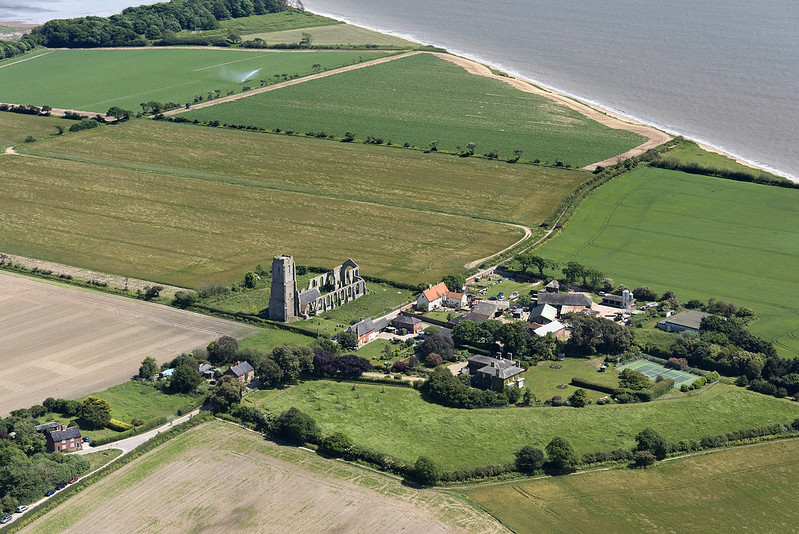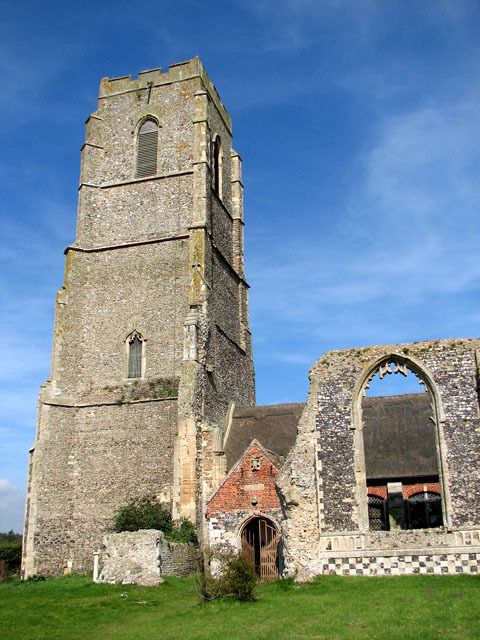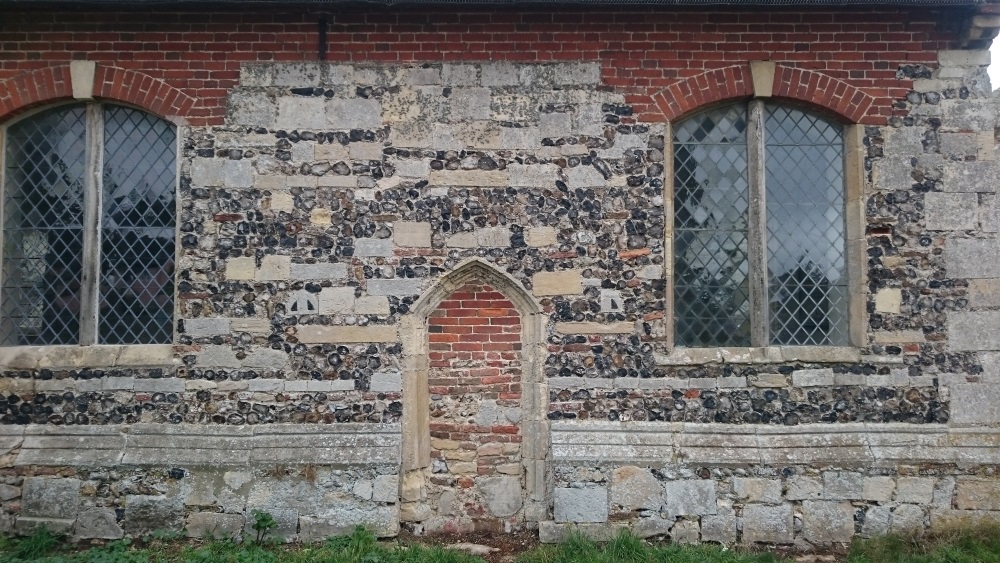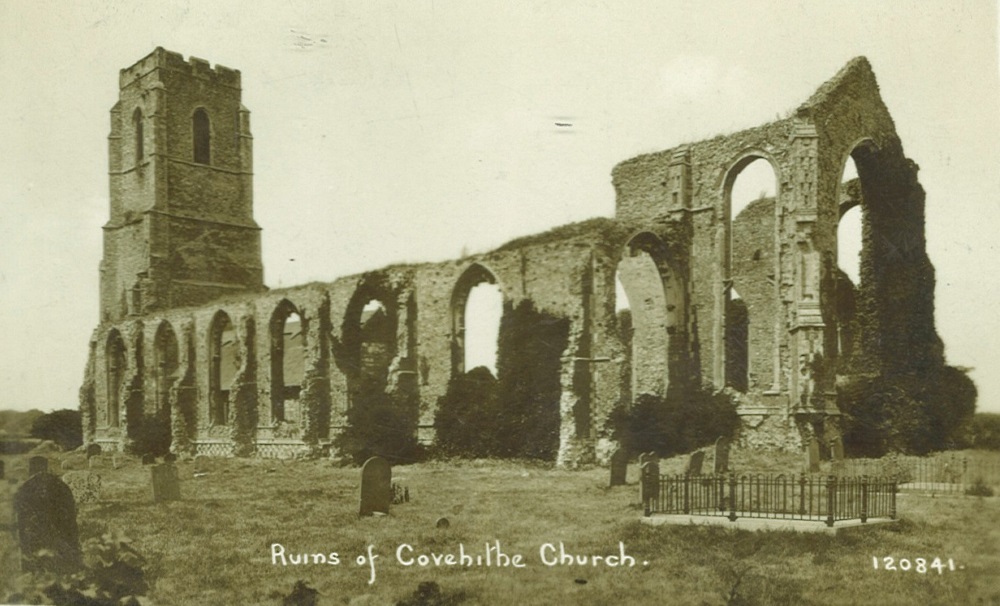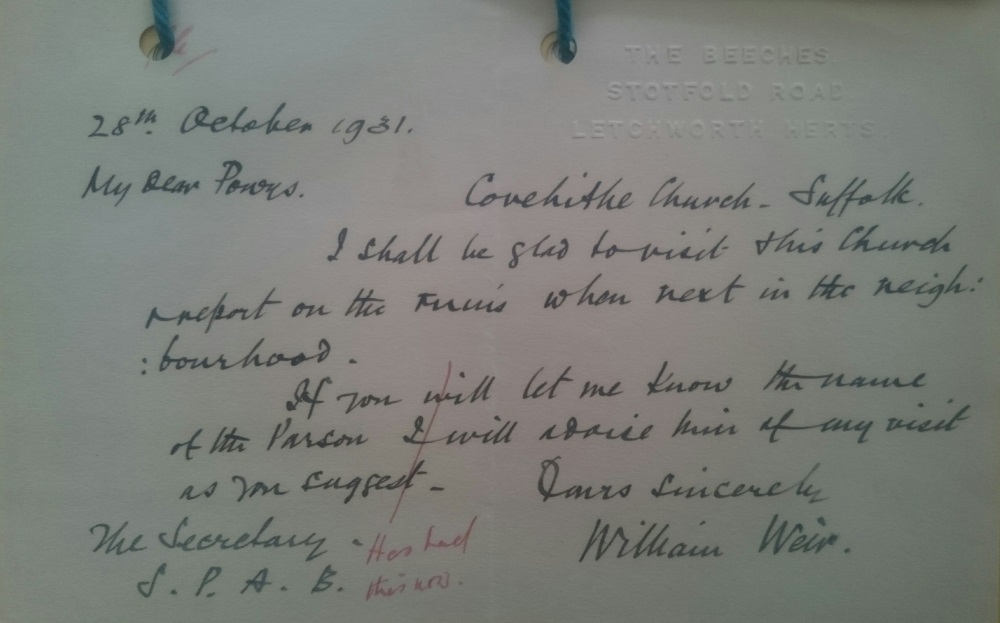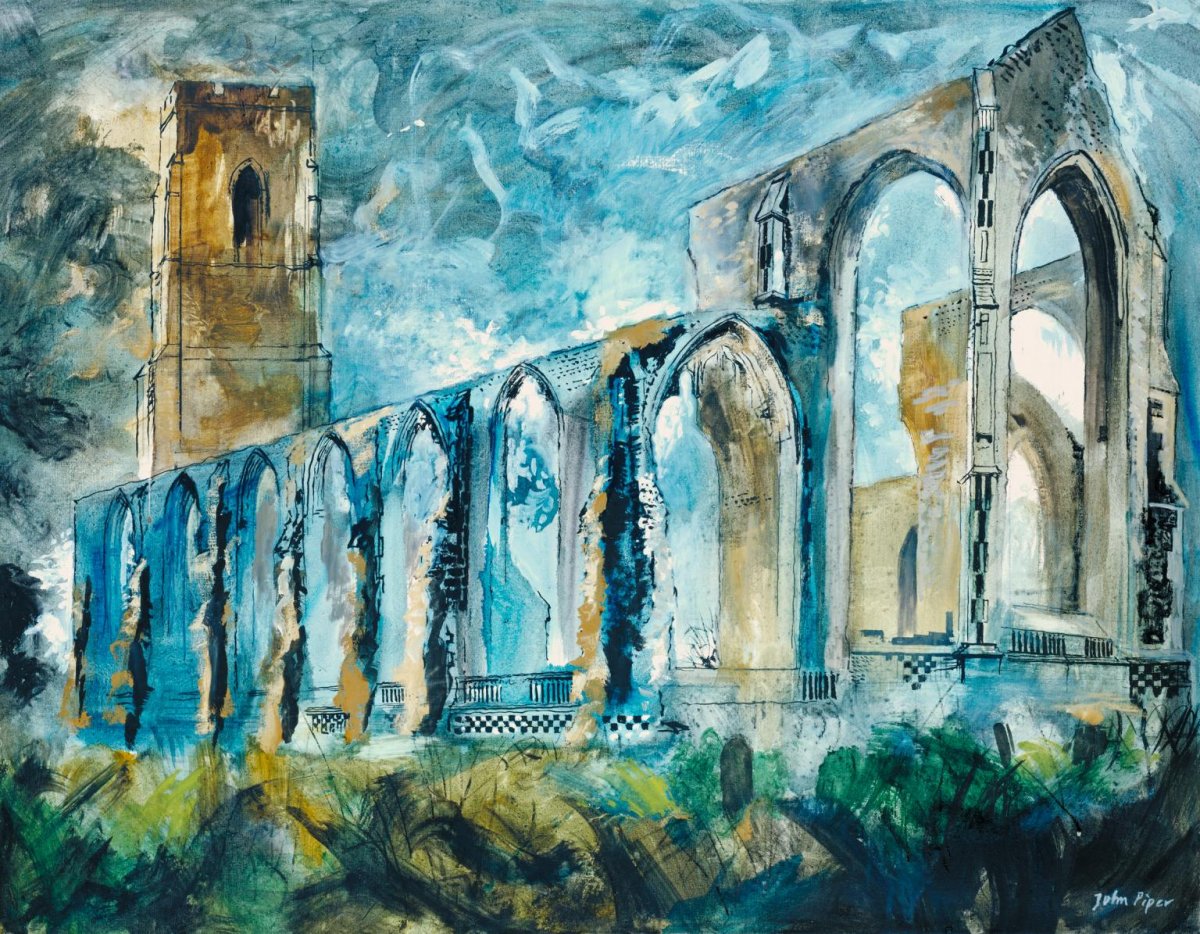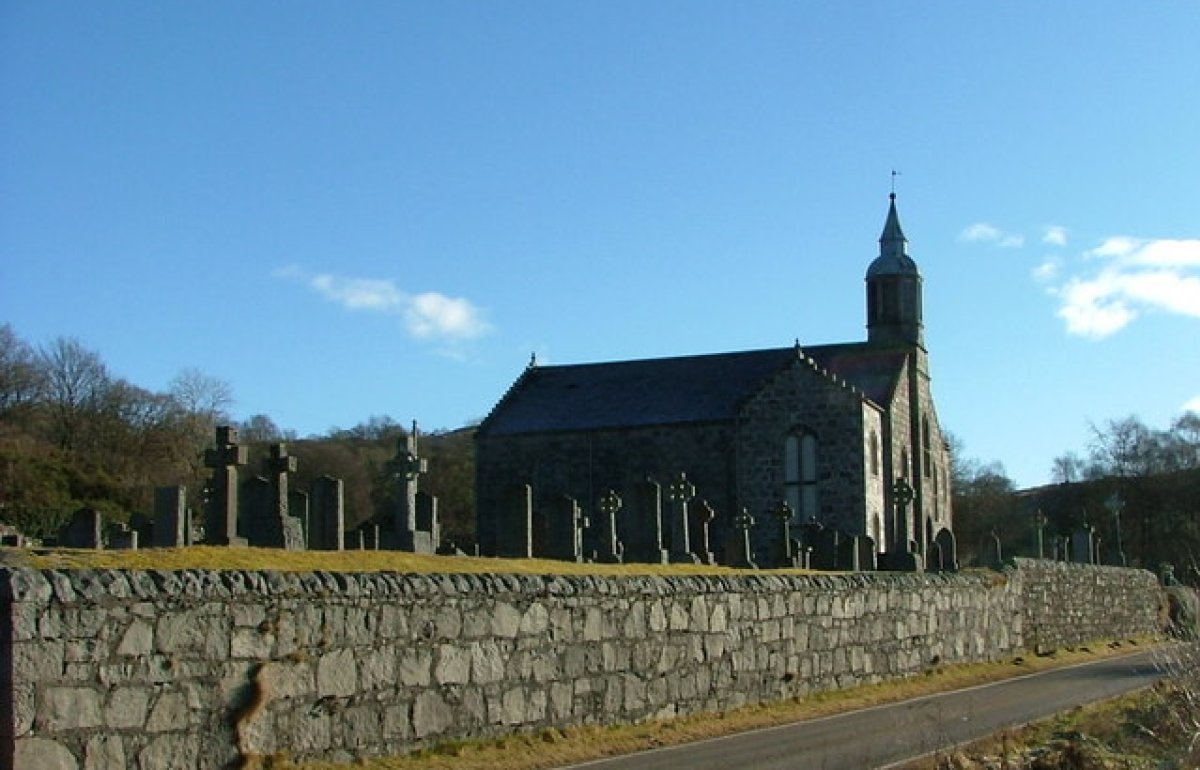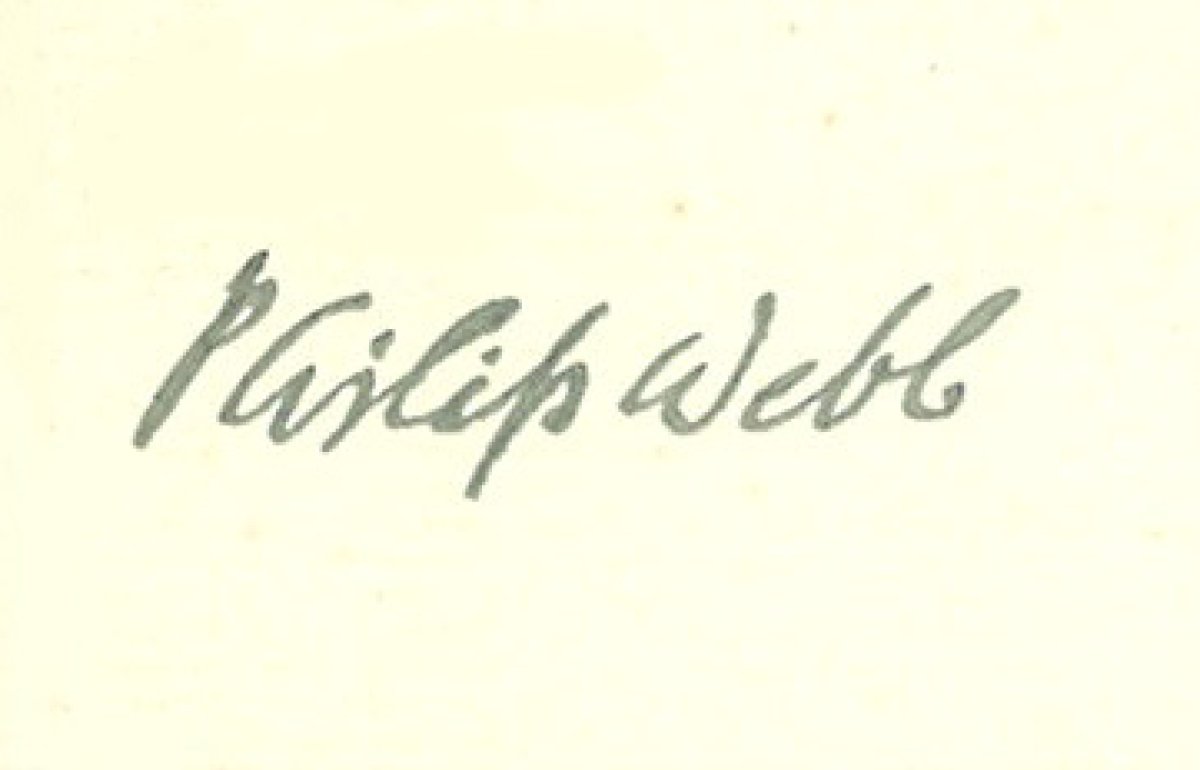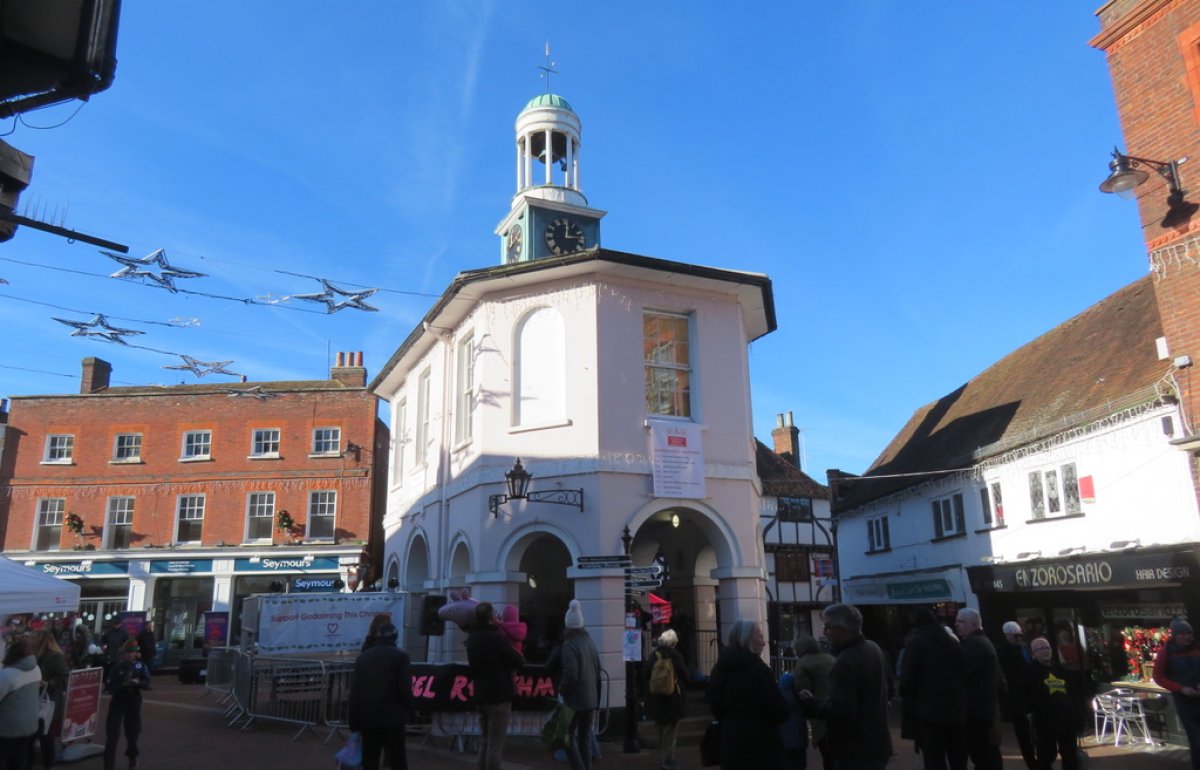From the archive: Covehithe Church, Suffolk
Share on:
Standing on the very edge of the county, Maggie Goodall explores one of Suffolk's finest medieval churches and its history
The dog scampers along the windswept beach, delighted by seaweed smells and his own pawprints in the sand. We follow in his tracks, picking our way round shallow lagoons left by last night’s tide and the bleached remains of branches and gnarly trunks washed out from the cliff. We scramble up onto a hidden coast path snaking low through gorse and shrubs and emerge at the foot of a looming windowless shell.
Credit: John Fielding, via Flickr
This is St Andrew, Covehithe, or what remains of it: a lonely sentinel guarding the stretch of Suffolk coast between Southwold and Lowestoft. The final stopping point on a narrow lane that leads to nowhere except the sea. Comprising the outer walls and 14th-century west tower of a large flint and ashlar church, the windows soar skywards above an elegant chequerboard flushwork skirt. But they have lost their mullions, most tracery and sills; the buttresses have been robbed of their stone facings leaving their flint flanks looking ragged and chewed; and where a south porch might be expected there is instead a yawning gap. Within, the aisle arcades have been demolished, though fragments of a rood stair remain visible in the depth of the north wall and there are hints of a vaulted crypt at the east end.
Credit: Evelyn Simak, via Atlas Obscura
Once inside, the ruins reveal another secret – like a Matryoshka, a smaller and very different church nests inside the shell of the old, snug against the foot of the tower. Here is the new church of 1672, a simple volume pieced together from salvaged flint and masonry, with re-set carvings and a band of brick beneath the eaves and in the porch gable, adding to its patchwork appearance. Diamond leaded crown glass windows, some etched with names and dates, glint under a thatched roof. The south door is 14th century, reused from the old church, and the tower serves as a vestry at ground floor level. The ruination, and this curious conjoined arrangement which followed, was not the result of some terrible accident but of the parish’s considered decision to “derelict” the 15th-century church - obtaining permission to remove its roof and build something smaller within its walls. Although it had been damaged during the Civil War, when the East Anglian iconoclast William Dowsing (Commissioner for the Destruction of Monuments of Idolatry and Superstition) visited and ordered the smashing of its figurative stained glass, the slighting of the 1670s was most likely driven by economic concerns, the care of such a large building having possibly always been too great a burden on its tiny community.
Credit: Maggie Goodall
It is perhaps not surprising that this remarkable place has attracted the SPAB’s attention over the years. H C Wolton of the Suffolk Archaeological Society and Suffolk Preservation Trust wrote to the Society about Covehithe in October 1931. He had noticed during a visit that the flint and masonry above the south window of the chancel was cracked, and was concerned that its condition was endangering the east end of the ruins. The SPAB’s Secretary, A R Powys, contacted St Edmundsbury and Ipswich Diocesan Advisory Committee with an offer of help, which was readily accepted, and SPAB architect William Weir was asked to visit. On 30 March 1932 he duly returned a typically meticulous ten-page condition report and recommendations for repairs, with an accompanying plan and photograph, which were forwarded to the DAC Secretary, H E Singleton-Cooper, and the vicar, the Revd L W Wingfield.
Credit: William Weir, SPAB archive
Weir reported that the new church was in generally good condition, though he diagnosed the cause of damp in its walls and recommended improvements – particularly in rainwater handling and drainage. He agreed that the most important thing was to save the east gable of the chancel by stitching the crack above the damaged window and by repairing and strengthening the north and south walls to support it. He advocated removing invasive vegetation, reinstating fallen areas of flint facing, rebedding loose stone where ashlar had been robbed out, and capping the ruined wall heads with a combination of concrete and two layers of turf, at an estimated cost of £300.
Powys wrote again to the DAC in April 1933 enquiring as to progress. Singleton-Cooper replied saying that the committee had “given much anxious consideration” to the case and the Archdeacon had looked into raising money to pay for the repairs. But, given the lack of residents - Covehithe consisting of little more than a farm and a scatter of cottages – there was no possibility of securing funding locally. Powys tentatively suggested a fund-raising campaign aimed at summer visitors to the area. But the SPAB archive file falls tantalisingly silent at this point, saving for a further brief exchange of letters in June 1937 which established that no repair work had yet been done.
Credit: SPAB archive
Now Grade I listed, the ruins of St Andrew, Covehithe are today largely stable and free of the billowing clouds of ivy seen in so many old postcards, romantic watercolours and Francis Frith’s haunting photographs of 1892. They are in the care of the Churches Conservation Trust, whilst the little church tucked away inside the roofless nave remains in use for worship. Always impressive – whether sunlit and waist deep in undulating summer grasses or melancholy and bleak against stormy skies - the gaunt skeleton embodies memories that this was once one of the great Medieval churches of Suffolk. Of its near neighbours, Walberswick (another St Andrew) was similarly slighted, un-roofed, and a smaller church built within its walls in around 1690 though, happily, St Edmund, Southwold survives to remind us what they might have been. However, the fate of St Nicholas, Easton Bavents, completely lost to the waves by the 1660s, perhaps foreshadows Covehithe’s future, as the North Sea gnaws away relentlessly at this crumbling coast.
Artist John Piper photographed and later painted St Andrew’s, in 1983 when he was 80. The Tate gallery label for his striking image describes it as “an emotional as well as an architectural view. The racing clouds and fitful light suggest a personal sense of the ruin as an image of preservation as well as destruction”.
Covehithe Church, John Piper, 1983. Credit: Tate and Piper Estate
The dog flushes a rabbit from the long grass of the churchyard and streaks off in pursuit, tail aloft like a banner. It’s coming on to rain. We turn back towards the beach and bid Covehithe farewell again, certain of returning another day.
Sign up for our email newsletter
Get involved

